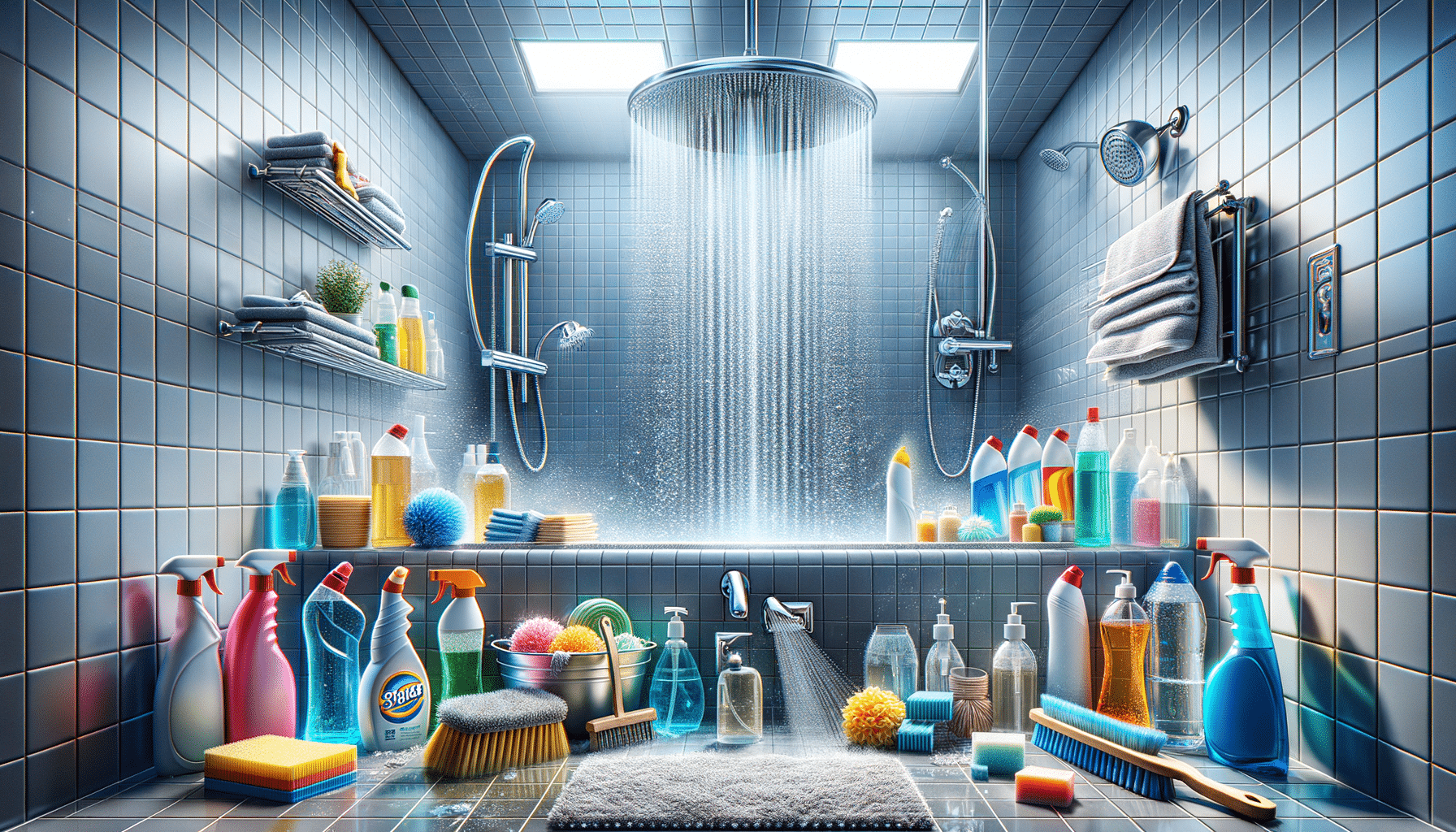
7 surprising shower cleaning tips that actually work
Understanding the Basics of Cleaning Products
Cleaning products are essential in maintaining hygiene and cleanliness in our homes. They come in various forms, each designed to tackle specific cleaning tasks. Understanding the composition and purpose of different cleaning products can help in selecting the right one for your needs.
Most cleaning products contain surfactants, which help in breaking down grease and grime. Surfactants work by reducing the surface tension of water, allowing it to mix with oils and dirt more effectively. Additionally, many products include disinfectants that kill bacteria and viruses, ensuring a sanitary environment.
There are several categories of cleaning products:
- All-purpose cleaners: Versatile and suitable for most surfaces.
- Specialty cleaners: Designed for specific tasks like oven or glass cleaning.
- Disinfectants: Focused on killing germs and bacteria.
- Abrasive cleaners: Contain particles that help scrub tough stains.
Choosing the right product involves understanding the surface and type of dirt you are dealing with. For instance, abrasive cleaners are effective on tough stains but may damage delicate surfaces. Therefore, assessing the cleaning task is crucial before selecting a product.
Eco-Friendly Cleaning Solutions
With increasing awareness about environmental sustainability, eco-friendly cleaning products have gained popularity. These products are designed to minimize environmental impact while maintaining cleaning efficacy. They often contain natural ingredients and avoid harsh chemicals.
Eco-friendly cleaning products offer several benefits:
- Biodegradable ingredients: Break down naturally without harming ecosystems.
- Non-toxic formulations: Safe for humans and pets.
- Reduced packaging waste: Often come in recyclable or reusable containers.
Many eco-friendly products utilize plant-based ingredients such as vinegar, baking soda, and essential oils. These natural components are effective in cleaning while being gentle on the environment. For instance, vinegar is known for its ability to cut through grease and eliminate odors, making it a versatile cleaning agent.
When selecting eco-friendly products, look for certifications that indicate environmental responsibility, such as labels from recognized environmental organizations. These certifications ensure that the products meet specific sustainability criteria.
The Science Behind Cleaning Efficacy
Cleaning efficacy depends on several scientific principles, including chemistry and biology. Understanding these principles can help in choosing effective cleaning products and methods.
One fundamental concept is the pH level of cleaning products. The pH scale measures how acidic or basic a substance is, with most cleaning products falling into either category:
- Acidic cleaners: Effective against mineral deposits and rust. Commonly used in bathroom cleaners.
- Alkaline cleaners: Ideal for cutting through grease and organic stains. Used in kitchen and laundry products.
Biological factors also play a role, particularly when dealing with bacteria and viruses. Disinfectants contain active ingredients like alcohol or chlorine, which disrupt the cellular structures of microorganisms, rendering them inactive. This is crucial for maintaining hygiene in areas prone to bacterial growth, such as kitchens and bathrooms.
Furthermore, the contact time of a cleaning product on a surface affects its efficacy. Allowing a product to sit for a recommended period ensures that it effectively breaks down dirt and kills germs. This is especially important for disinfectants, which require time to penetrate microbial cell walls.
Innovations in Cleaning Technology
The cleaning industry has witnessed significant technological advancements, leading to more efficient and convenient cleaning solutions. Innovations such as robotic cleaners, smart appliances, and advanced formulations are transforming the way we approach cleaning tasks.
Robotic vacuum cleaners, for example, have become a popular choice for maintaining clean floors with minimal effort. These devices use sensors and algorithms to navigate spaces, collecting dust and debris autonomously. Some models can even be controlled via smartphone apps, allowing users to schedule cleaning sessions remotely.
Smart appliances, including washing machines and dishwashers, incorporate features like automatic detergent dispensing and cycle optimization. These technologies ensure optimal cleaning performance while conserving water and energy. Additionally, smart appliances can provide maintenance alerts, helping users address issues before they escalate.
Advanced cleaning formulations have also emerged, offering targeted solutions for specific cleaning challenges. Enzyme-based cleaners, for instance, utilize enzymes to break down organic stains like food and pet messes. These formulations are particularly effective in laundry detergents and stain removers.
As technology continues to evolve, we can expect further innovations that enhance cleaning efficiency and user convenience. Staying informed about these advancements can help consumers make informed choices when upgrading their cleaning arsenal.
Choosing the Right Cleaning Products for Your Home
Selecting the right cleaning products involves considering several factors, including the type of surfaces, the nature of dirt, and personal preferences. With a myriad of options available, making an informed decision can enhance cleaning effectiveness and safety.
Here are some tips for choosing the right cleaning products:
- Identify the surface type: Different surfaces require specific cleaning agents. For instance, wood surfaces benefit from gentle cleaners, while tiles may require stronger formulations.
- Consider allergies and sensitivities: Opt for hypoallergenic or fragrance-free products if you or your family members have allergies or sensitivities.
- Evaluate environmental impact: Choose eco-friendly products to minimize your ecological footprint.
It’s also important to read product labels and instructions carefully. This ensures that you use the product correctly and avoid potential damage to surfaces. Additionally, conducting spot tests on inconspicuous areas can prevent adverse reactions, especially when using new products.
Ultimately, the right cleaning products can make a significant difference in maintaining a clean and healthy home environment. By considering the specific needs of your household, you can create a cleaning routine that is both effective and sustainable.